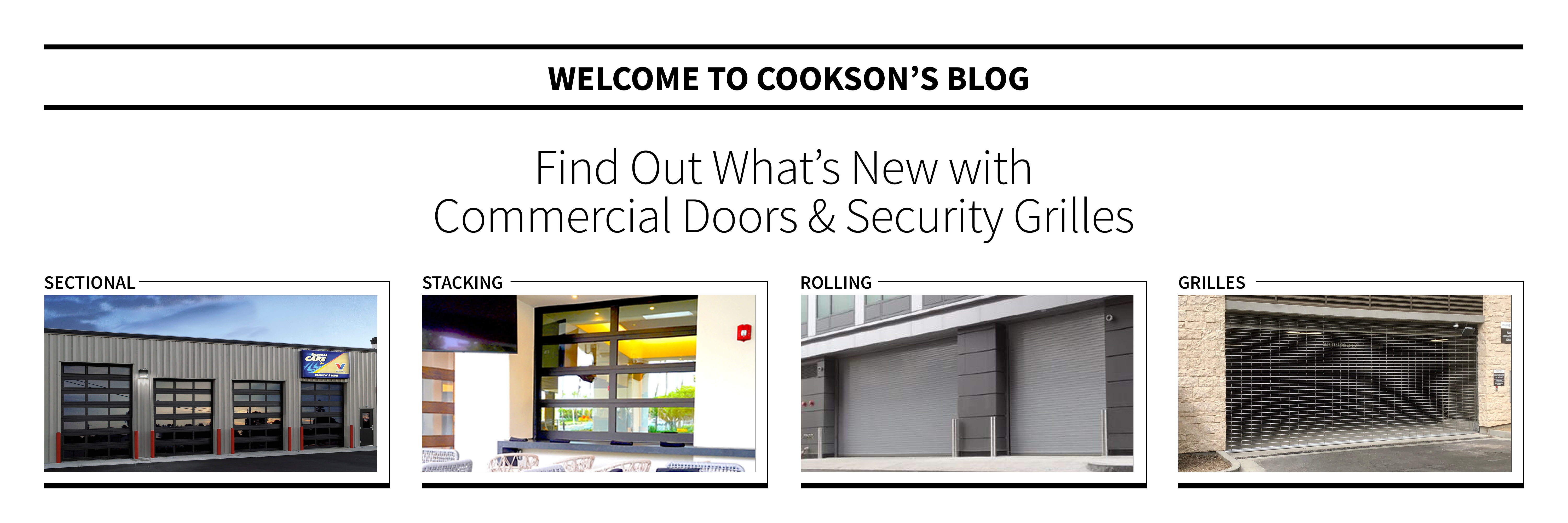

Cookson Blog
Welcome to the Cookson Blog! - Roll Up Door and Security Grille news - What's New?
SUBSCRIBE
Get updates on new blog posts to your inbox!
Understanding STC in the Rolling Door Industry
What is STC?
STC is a commonly used acronym across the construction industry that stands for Sound Transmission Class. Generally speaking, STC is a standard that provides a rating of how well a building partition reduces internal airborne sound. Simply stated, the higher the STC the better.
There is also a standard called OITC, which stands for Outdoor–Indoor Transmission Class. OITC is a similar standard that is used to indicate the rate of transmission of sound between outdoor and indoor spaces in a structure. STC and OITC relate to many aspects of the construction industry, but we will be focusing on STC and understanding the role that it plays within the rolling door industry.
How is STC measured on a rolling door?
The standards to test for STC have been established by the American Society for Testing and Materials (ASTM) using procedure E90. ASTM E90 is generally performed in a controlled laboratory environment, although it is not entirely uncommon to have a field test performed. A controlled laboratory test is much more consistent and reliable than a test done in the field. When testing in the field the environment and surroundings will cause the test results to vary when multiple tests are performed.
The testing is performed by exposing the door to 16 standard frequencies, ranging from 125 Hz up to 4000 Hz. The transmission loss values are then charted on a sound pressure level graph. The resulting curve is then compared to a standard reference contour. Acoustical engineers then fit these values with the coordinating Transmission Loss Curve to determine an STC rating.
Are all STC ratings equal for rolling doors?
Not at all! When seeking an STC rating for a specific product, it is crucial to request the test report. The report will help you understand the testing parameters used to achieve that number. For example, you will often find rolling door manufacturers only posting the STC of the curtain. Don’t be fooled! Not only is this number higher than the STC of the whole assembly, it is irrelevant.
Testing the curtain by itself does not show a real-life situation. Do you ever install just a curtain? No, when a rolling door is installed, there is also a header, guides, and a bottom bar. These components are required in the installation process and are also known to be the most vulnerable regarding sound, air passage, or the rolling door seal.
This means that testing a complete assembly will give you a lower STC rating, but it is also more comparable to a real-life situation.
Just because the STC rating is listed as being tested on the assembly does not mean you should not request the test report. The values that are being provided may not be based on a standard construction or the construction that you plan to use. For example, if the guides of the entire assembly test specimen are encased in the drywall, this will increase the STC rating that the assembly will achieve.
You want to make sure that you are receiving an STC rating with a configuration identical to the one that you will be using on your project. Otherwise, it is not valid.
What is a good STC rating for commercial rolling doors?
Achieving a desirable STC rating without a high-quality rolling door can be challenging. Most hollow-core steel doors provide ratings in the 15-17 range, which are significantly low. Soft speech is typically audible in the 20-25 range.
Increasing these levels requires some type of insulation. The Thermiser Max® Insulated Rolling Door offers one of the highest-rated doors with an STC rating of 30, according to ASTM E90. In addition to minimizing sound transmission, these doors provide superior energy efficiency and enhanced protection from intrusion.
Benefits of a high STC rating
Insulated commercial rolling doors allow building occupants to experience many benefits, including:
- Energy efficiency: Our commercial rolling doors feature patented sealing technology that blocks extreme weather, helping regulate temperatures inside your facility.
- Cost savings: Besides helping lower utility costs, insulated doors help save on insurance premiums because they increase a building's security. The increased sturdiness and durability of an insulated door also minimizes repair and maintenance requirements.
- Aesthetics: At Cookson, our insulated rolling doors accommodate a broad range of styles and design features. Customers can choose from various material options, including stainless and galvanized steel. We also offer finishes in over 180 colors.
How can I achieve a higher STC on my rolling door?
There are two ways to achieve a higher STC rating on your rolling door. As mentioned previously, you can use a unique construction around the door opening or a rolling door seal. For example, you can encase the guides in drywall or recess the coil. This will allow less sound passage in these areas, producing a higher STC rating.
The second option is to have a superimposed installation. This means that two insulated curtains will be installed next to each other to buffer the passage of sound further. The superimposed method is not very common and could be costly, but it will assist you in meeting a higher STC rating.
Fortunately, rolling doors are made to order, which allows you to customize the door to achieve the STC rating that is needed for your specific project.
Contact Cookson today for more information on STC ratings
Learn more about how STC affects your unique rolling door application from the experts at Cookson. Our Architectural Design Support Team can help you identify your door requirements and create the most practical, efficient solution for your needs. Contact us today to get started.





